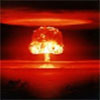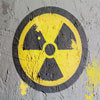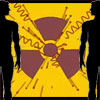Nuclear Radiation: The Thresholds Of Agony
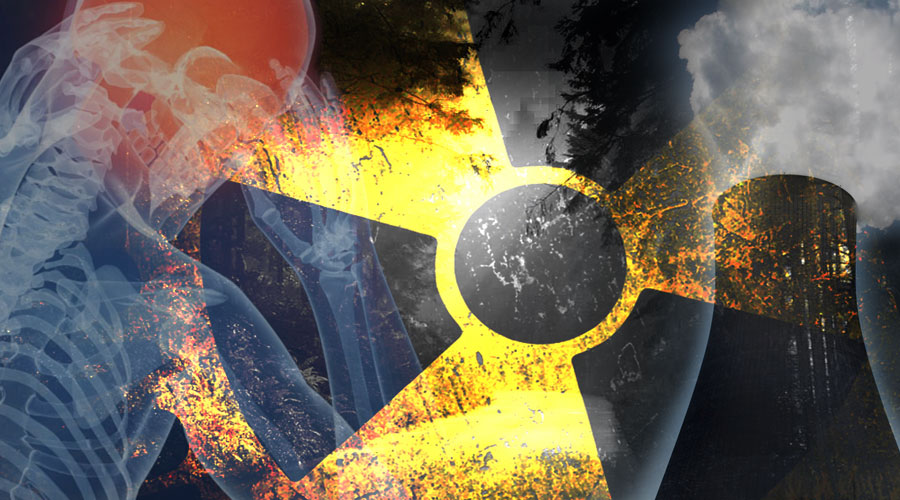 by Richard Curtis & Elizabeth Hogan
by Richard Curtis & Elizabeth Hogan
In order to understand the perils of radioactivity, it becomes necessary to review some of the things known about the way radioactivity kills and injures. Most readers are probably familiar with many of these facts, but are accustomed to thinking about them only in relation to nuclear war. It is imperative, however, that we be fully aware that mismanagement of the peaceful uses of atomic energy will subject humans to many of the same gruesome afflictions and agonizing deaths as those suffered by survivors of Hiroshima’s fireball.
To start, radiation damage may be inflicted in a number of ways: in large doses or small, all at once or by stages, externally or internally. Irradiation may be of the whole body, of specific organs or tissues, or of only a few cells.
A number of basics should be understood at the outset.
First, there is and always has been an external and internal “background” of natural radiation. Until the Atomic Age, that background was constant. One source is the earth’s crust. Although some areas, such as those where granite predominates, may exhibit more radioactivity than others, such as limestone formations, the earth’s surface is estimated to contain an average of about three tons of uranium, six tons of thorium, and one gram of radium per square mile to a depth of one foot. Also, every person bears a small but detectable amount of radium and other radioactive emitters inside his or her body, owing to infinitesimal amounts of those substances absorbed and retained by eating, drinking, and breathing. Cosmic rays also contribute a share of radiation. Experts calculate the the sum of internal and external natural background radiation is about five roentgens over the first thirty years of one’s life. [Roentgens are a measure of the actual energy absorbed in tissue. For comparison’s sake, a single dental X-ray will run about 1 roentgen (expressed as “1 r”), and a full mouth X-ray series may involve between 14 and 18 r.]
Second, it must be understood that any kind of radiation – alpha rays, beta rays, gamma rays, neutrons, cosmic rays, X-rays, etc. – produces some effects on cells and organs. The essential difference between one ray and another, from the viewpoint of biological effects, is one of dosage. Some kinds of rays must be more intense than others to do the same amount of harm. The important point to bear in mind is that some types of radiation produced in reactor fission processes are extremely vicious even in minutest quantities.
Third, radioactivity is undetectable by human senses, and ineradicable except through natural decay, which for some elements take hundreds and even thousands of years.
Fourth, the design of all atomic power plants projected for the next decade (1970-1980) in the United States is such that they must unavoidably produce large quantities of radiation and radioactive waste known as “fission products”.
Fifth, experts state that these fission products are a million to a billion times more toxic than any industrial pollutant known heretofore.
Finally, scientists have produced convincing evidence pointing to the conclusion that no cell ever fully recovers from a dose of radiation. It may appear to recover, these authorities point out, but a certain degree of damage is irreversible and may show up a considerable time after exposure.
Consider first the consequences of an intense single dose of radiation suffered by the whole body, since in its simple graphic horror it is easiest to comprehend.
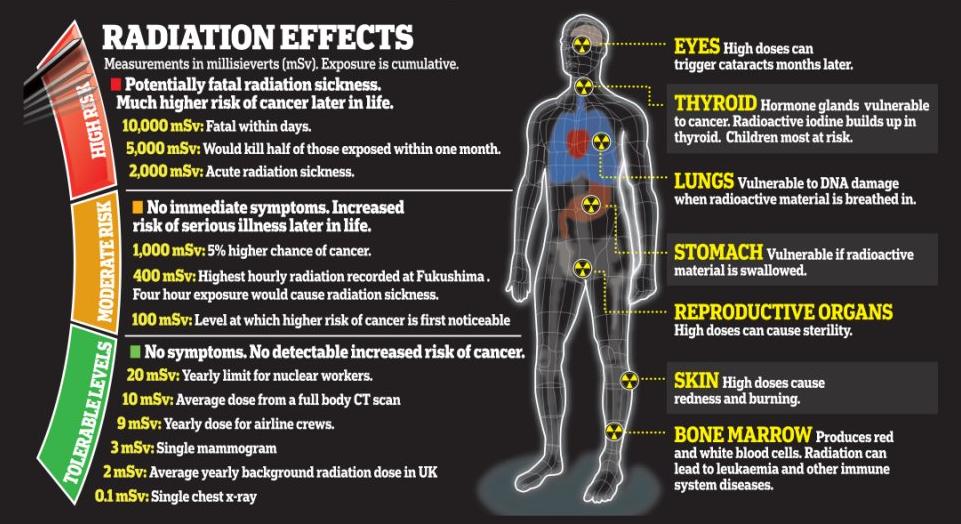 In the event of a major reactor accident in which radioactive gas and fission products were dispersed into the atmosphere, a large number of people would be exposed directly to massive doses of radiation. What would happen to them?
In the event of a major reactor accident in which radioactive gas and fission products were dispersed into the atmosphere, a large number of people would be exposed directly to massive doses of radiation. What would happen to them?
While the amount of radiation necessary to produce various effects might vary according to a variety of conditions, the following thresholds expressed in roentgens can be taken as fairly universal:
- A dose of 600 r or more would probably kill nearly everyone exposed within a month.
- A dose of 400-450 r would be deadly in half the cases.
- A dose of 300 r would kill one quarter of those exposed, and induce serious injury in 90 percent of the remaining number.
- A dose of 200 r would kill about 2 percent, and induce serious illness in half of the remaining cases.
From 200 r down to zero the effects diminish proportionately, and between 0 and 25 r no observable effects are produced directly. But this statement must not be misinterpreted to mean that such low doses are harmless.

“The first effect…is a sensation of nausea developing suddenly and soon followed by vomiting and sometimes by diarrhea. In some people, these symptoms develop within half an hour of exposure; in others, they may not appear for several hours. Usually, they disappear after two or three days. In a small proportion of cases, however, the symptoms persist; vomiting and diarrhea increase in intensity; exhaustion, fever, and perhaps delirium follow; and death may occur a week or so after exposure.
Those who recover from this phase of sickness and diarrhea may feel fairly well, although examination of the blood will reveal a fall in the number of white cells. Between the second and fourth weeks, however, a new series of ailments, preceded by gradually increasing malaise, will appear in some of those exposed. The first sign of these developments is likely to be partial or complete loss of hair. Then, from about the third week onwards, small hemorrhages will be noticed in the skin and in the mucous membranes of the mouth, which will be associated with a tendency to bruise easily and to bleed from the gums. At the same time, ulcerations will develop in the mouth and throat, and similar ulceration occurring in the bowels will cause a renewal of the diarrhea. Soon the patient will be gravely ill, with complete loss of appetite, loss of weight, and sustained high fever. Feeding by mouth will become impossible, and healing wounds will break down and become infected.
At this stage the number of red cells in the blood is below normal, and this anemia will increase progressively until the fourth or fifth week after exposure. The fall in the number of white blood cells, noted during the first two days after exposure, will have progressed during the intervening symptomless period, and will by now be reaching its full extent. The changes in the blood count seriously impair the ability to combat infection, and evidence from Nagasaki and Hiroshima shows that infections of all kinds were rife among the victims of the bomb. Many of those affected die at this stage and, in those who survive, recovery may be slow and convalescence prolonged; even when recovery appears to be established, death may occur suddenly from an infection which in a healthy person would have only trivial results.”
The above pattern, known as “marrow death,” is the result of the failure of the cells in the bone marrow to produce blood. It appears that if a few healthy marrow cells survive, or if the victim receives injections of marrow from healthy donors, this form of death can be averted. But the victim is actually only buying time, for the chances are high that cancer, leukemia, acute anemia, or some other ailment will strike in due course.
What about higher doses than the minimum lethal dose of 600 r? If the victim receives a dose of 1000 r or more, it would appear that nothing can help him, and he is doomed to live no longer than a week. The symptoms leading to his demise are characterized as “intestinal death”.
At considerably higher doses, say 3000 r and up, the nerve tissue functions break down and a “central nervous system death” follows quite rapidly. There is a case on record of an AEC employee who succumbed to the latter a day and a half after taking a whole-body dose estimated at 12,000 r. Plutonium was being recovered from the Los Alamos reactor, and through an error three batches in different stages of purification were put in a large tank together. When an electric stirrer was activated, the plutonium reached critical dimensions and exploded.
The workman operating the stirring device was thrown from a low ladder, got to his feet, and ran outside crying that he was burning up. His skin was indeed glowing cherry red. Within minutes he began vomiting and discharging a profuse, watery diarrhea. By the time he got to the hospital he was in shock. Thirty-six hours after the accident he was, mercifully, dead. Autopsy revealed symptoms of all three kinds of radiation death – marrow, intestinal, and central nervous system – plus considerable damage to the heart muscle.
We have been talking about so-called “whole body” doses. In the event of a nuclear accident, however, it is likely that many people will suffer damage not to their whole bodies, but to specific organs only. [In a “whole body” exposure, the amount of tissue absorbing the dose is much greater than in a localized exposure such as a dental X-ray. Therefore, a high dose of radiation applied to a local area of the body might not necessarily prove as harmful to the entire human system as the same dose distributed over the whole body.] What are some of the effects of high doses on those organs and tissues?
Female Sex Organs:
The National Research Council reports that single doses to the ovaries of 125 to 150 r may produce cessation of menstruation in 50 percent of women. A single dose of 170 r can produce temporary sterility for one to three years, and a does of 500 r will mean permanent sterility for most women.
It should be borne in mind that the female child is born with all the ova she will ever produce. Exposure of her ovaries will thus affect eggs which are to be fertilized when she matures, leading either to defective offspring or to hereditary defects which will manifest themselves in future generations.
Male Sex Organs:
Very small doses of radiation, 50 r or less, can lead to inhibition of sperm production. A 250 r dose may produce sterility for a year or more, and 500-600 r will bring about permanent sterility. Even if sterility is temporary, the sperm that does return will bear defective genes that will eventually appear as mutations in future generations.
Blood and Blood-Related Organs:
No more than 50 r applied to the whole body will cause the number of lymphocytes, a variety of white blood cell, to drop by 50 percent, and it will take about a week before the number returns to normal. Higher doses, or repeated or prolonged exposure, will lead to precipitous drops in blood cell count from which recovery is much slower.
Destruction or disturbance of red and white blood cells will injure the body’s ability to protect against infection, repair damaged tissue, and promote clotting. Many organs in the body responsible for blood cell production, removal of dead cells, blood storage, and other functions can also be hurt. Among these organs are the lymph nodes, spleen, and bone marrow.
Skin:
Thousands of cases of skin cancer have been produced by overdoses of radiation, usually high doses in the thousands of roentgens. Smaller doses may not produce immediate damage, but latent periods of twenty years or more may pass before ulcerations or malignancies appear. In 1955 two British doctors reported a case of skin cancer in a seventy-year old woman. She had received about 1500 r from a fluoroscope trained on her abdomen to detect kidney stones. A burn had appeared shortly after the exposure, then healed. In 1947, however, a skin cancer, which ultimately proved fatal, developed in precisely that spot. How long had it taken? Forty-nine years. The original fluoroscope irradiation had occurred in 1898!
Radiation of the skin at 300-400 r and up can also cause temporary or permanent loss of hair, graying of hair, destruction of the sweat glands, and loss of the skin’s natural suppleness and glossy texture.
Eyes:
Cataracts, characterized by opacity of the lens, have been produced thousands of times as a result of deliberate irradiation of patients for cancer and other conditions. The latent period, observed in studies made by Dr. G. R. Merriam, Jr., of the Institute of Ophthalmology of New York, averaged almost four years, but one case took as long as thirteen years to appear.
Bones and Teeth:
Bone cancer has often appeared years after exposure to heavy doses of radiation, 1500 r and more. The bones are particularly susceptible to radiation form certain isotopes, such as strontium 90, absorbed as a result of ingestion of radioactively contaminated food, such as fallout-tainted milk.
Radiation of children’s bones has caused retardation of growth: About 150 r will do it, and heavier doses have resulted in limb shortening. Local irradiation of the jaws has slowed tooth growth, and large doses may be followed by infection about the teeth, loss of teeth, and destruction of the jawbone.
Brain:
Relatively small doses of radiation to localized regions of the brain have produced a variety of symptoms, depending on what functions those regions control. In one experiment, a couple of volunteers who had been given 100 r in the diencephalon, or middle brain, experienced a number of symptoms ranging from ringing in the ears to apathy to hyperactivity. Single doses on the order of 500 r and more have produced brain damage in children. X-radiation for scalp conditions has produced such effects as blindness, paraplegia, epilepsy, delirium, twitches, and ulcerations.
Lung:
Heavy doses of radiation, such as those received for treatment of breast cancer (2,000-3,000 r) have produced swelling and scarring of lung tissue, and possibly tumors. Breathing of radioactive material, such as radon (the gas found in uranium mines), has produced numerous lung cancers, with a latent period as long as seventeen years.
Excerpt from Perils Of The Peaceful Atom
See Part II here.
Posted in Other Topicswith comments disabled.



